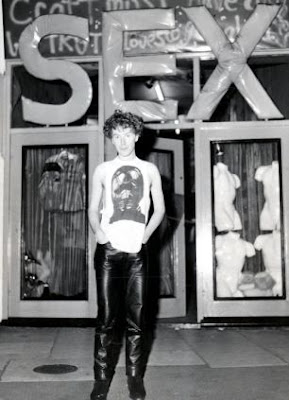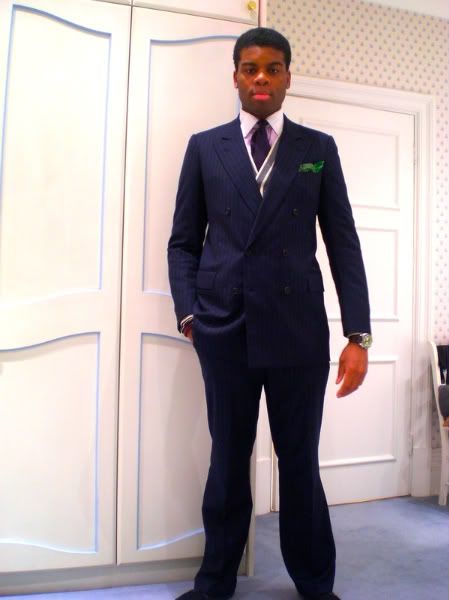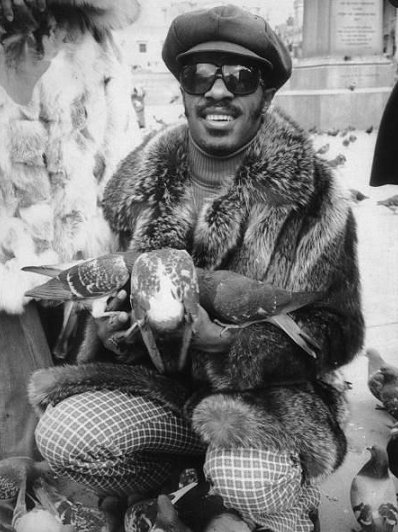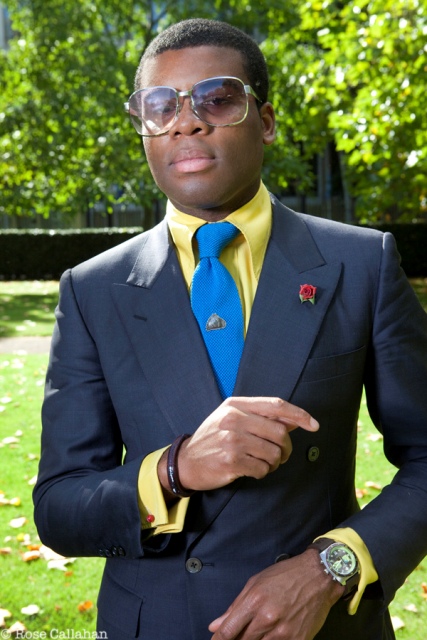Parallax error beheads you
Framing of a history lost
Caravans of infants
Fortified against the frost
Systems under boulders
Compacting penumbra now
Salons unprotected
Disappear beneath a brow
Absence round the edges
Crackles in an orange sky
Shutters on the safety
Standing by for your reply
Appalachian figure
Gazing down upon you, proud
Future life projecting
Something that you never vowed
And if I loved you
Doesn't mean I'll see you in the crowd
So go the words as Ben Jacobs (I'll refrain from using his pseudonym because last night one of my best friends described it as akin to a wrestling name and now I have luchadores on the brain) upends the previously instrumental nature of 'Orphaned', the endearingly unsettled fifth track of his third album and the first song on the record to willfully indulge his free associative lyrical bent. I'm not familiar with every single landscape photograph the words may mean to evoke but I love singing along nonetheless
'Orphaned' happens to be my favourite song of the LP for funny reasons. As Jacobs produces every scrap of his eclectic, musical history recombinant-sounds on an Amiga, it easily resembles the BGM that would flow from the tinny speakers of a Sega Game Gear or a Nintendo Game Boy, albeit warmer and more full bodied. It's mostly made up of a great number of cut-up-and-stitched together half-second samples, similar to the work of dance producer Akufen, that sound like the twitching of neurons set to whimsical, freewheeling electro-funk. And consisting as it does of about 3 sections that last 8 bars each, it's the earworm equivalent of a merry-go-round. But then I do have a little weakness for looped productions. Conversely, the rest of the record is in a far more structured vein, which allows Jacobs to spread his almost limitless musical imagination in as many directions as he likes
As long as I'm referencing video game BGM, I've long described 'Which Song', probably one of Jacobs' best received productions, as Scritti Politti's 'Perfect Way' absorbed into the Streets of Rage soundtrack. Expounding on some of his favourite topics - failed relationships with girls and satirising his own nerdiness - the song's juddering danceability, dynamic keyboard playing, jingle-like hooks and register-stretching falsetto brings out Scritti's adoration of prime Michael Jackson even moreso than the band themselves could and yet remains a definably Max Tundra track. Especially with lyrical winners like "Just because I don't like football/Or wear expensive shoes/Doesn't mean my friendship isn't something you should choose," though I find the ensuing bridge a little close to the bone ("Ultimately/Different coloured fabrics sewn/Together would be/Many times more useful if/They taught me to flirt/But instead inanimate/They hang there inert/Waiting to encumber me")
Like any good nerd with a computer, Jacobs is a dab hand with an arrangement, showing it off deftly during 'The Entertainment', morphing it from a lightly accompanied show tune (yes, I see what's been done there) to a hands-in-the-air Euro dance number before settling into a time signature shifting keyboard-led electronic jam. This is also exemplified by the opener, 'Gum Chimes', a 70s TV theme-like harpsichord-led ditty that could support dozens of harmonies, serves as the quietest, most restrained moment on the album and has a winning way with a trumpet and a xylophone. He also adds an appreciated alternative perspective to the 80s nostalgia that's driven many of this decade's musical and cultural impulses - like modern studio greats Cornelius and Timbaland, he has a strong signature sound and a wildly obsessive attention to each and every detail that makes his genre and decade hopping distinct from mere pastiche and aping. Aside from the aforementioned influences, 'Number Our Days' (opening with "Nothing happens when you die/You don't leave your body and fly off into the sky/The deities you count on were just made up by some guy") sounds like an off-key hybrid of The Pet Shop Boys and early Jam & Lewis (specifically, Cherelle and Alexander O' Neal's 'Saturday Love'), with Jacobs on vocoder, increasingly redolent of a robot Eeyore, falsetto choruses aside
The closer, 'Until We Die', which puts a more optimistic spin on Jacobs' fatalism, is stadium synth prog gone deliriously madcap for 11-plus minutes. Elsewhere, he finally crosses off rock music and thrash on his checklist, formerly in the high speed, off kilter, slightly noodly fun of 'Will Get Fooled Again' (also about dating, this time through popular internet sites - "I met the girl on eBay/She was bidding on Halfway to a Threeway") and latterly on 'Nord Lead Three', an exuberant, lo-fi valentine to his favourite analog synthesiser. A valentine dominated by a drumkit and guitars; I like that. 'Glycaemic Index Blues' (and with this, I believe I've covered all 10 tracks) is a twitchy, fast electro-funk number; almost unbearably zippy with pitch-shifted singing but suddenly sideswiped by a plaintive "I'm so alone" amongst the jumbled lyrics to remind us that Jacobs's (or his persona's) disposition is as changeable as his sonic backing
As an unabashed J-Pop and picopop fan, I'm wholly receptive to Parallax Error...'s hypermelodic showstopping, expert technical manoeuvering and blipvert-esque musical joyriding. It also shares some of my favourite things about those genres - pop classicism, a respect and love for conventions combined with gleeful boundary pushing, absurd catchiness and a truly elastic mindset that makes such endearing flights of fancy possible
And writing as a fellow neurotic, I believe that Jacobs manages to express the very picture of a modern introvert in more words and self-mocking humour than other such people will express in their lives, mine included. Sweet, catchy, fantastical, offbeat, patience testing and very, very expressive; not an album for mass consumption, but it easily finds favour with many a proud oddball
And that's one to grow on














































